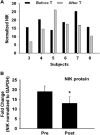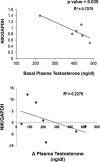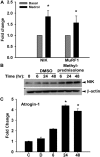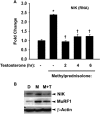Translational studies in older men using testosterone to treat sarcopenia
- PMID: 25125716
- PMCID: PMC4112698
Translational studies in older men using testosterone to treat sarcopenia
Abstract
Sarcopenia is the loss of skeletal muscle mass and strength that occurs with aging. Our research group has found an efficacious administration paradigm using testosterone to combat sarcopenia in humans. In addition, our research has uncovered an important regulatory enzyme of inflammation, nuclear factor-κB-inducing kinase that may regulate human skeletal muscle catabolism, and that appears to be counter-regulated by administration of standard doses of testosterone. This is important because a number of age-related clinical circumstances trigger acute and chronic muscle loss including cancer, chronic obstructive pulmonary disease, hospitalization, acute and chronic illness, and diseases in which systemic inflammation occurs. Moreover, it is often the treatment itself that can induce muscle loss. For example, glucocorticoids are tremendously effective at reducing inflammation and are a frontline therapy for many inflammatory-based diseases, yet paradoxically trigger muscle loss. We will discuss our research findings and the clinical significance of our human clinical translational research with testosterone.
Conflict of interest statement
Potential Conflicts of Interest: None Disclosed.
Figures





References
-
- Bruunsgaard H, Andersen-Ranberg K, Hjelmborg J, et al. Elevated levels of tumor necrosis factor alpha and mortality in centenarians. Am J Med. 2003;115:278–83. - PubMed
-
- Born J, Ditschuneit I, Schreiber M, et al. Effects of age and gender on pituitary-adrenocortical responsiveness in humans. Eur J Endocrinol. 1995;132:705–11. - PubMed
Publication types
MeSH terms
Substances
Grants and funding
LinkOut - more resources
Full Text Sources
Medical
